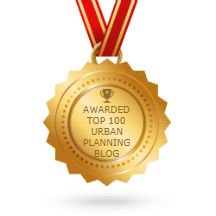Inner ring suburbs without Downtowns looking to create them
When I first got involved in urban revitalization, this was an issue with two college towns, Storrs, Connecticut (ULI Case Study) and College Park, Maryland, which didn't really have centers. College Park still doesn't.
-- "Revisiting past blog entries: College Park as a college town and economic development | PG County and Amazon," 2018
-- "To be a great city, College Park Maryland needs some "there", it needs a center," 2013
-- "More Prince George's County: College Park's militant refusal to become a college town makes it impossible for the city(and maybe the County) to become a great place," 2015
-- "College town follow up: alumni as residents and contributions to community capital," 2015
My experience in Detroit was that geographic location theory outlined where towns would develop on routes between cities, such as Royal Oak and separately, Birmingham, between Detroit and Pontiac. Pontiac in turn was a way station on the way to Flint, etc. Remember too these places were created long before sprawl and served as "regional centers" for farming and light industrial communities.
More recently, two Marion County-Indianapolis suburbs, Carmel ("Turning an office park into a town center," CNU) and Fishers ("See the new Fishers Municipal Center, which houses City Hall and the Fishers Art Center," Indianapolis Star) with an expanded city hall, an Events Center that opened last year, with a minor league hockey team as tenant, and mixed use developments in the pipeline, have been doing a lot of work on creating centers, Carmel under the then Republican but smart growth infused mayor, Jim Brainard, while is more of a response to be competitive with Carmel.
I started reading Crain's Detroit Business and both Warren--home to GM's technical engineering operations, and Livonia--primarily a community of residential housing, are both either developing or considering the development of downtowns.
-- "Warren resurrects plans to develop a downtown"
-- "Livonia wants to build a downtown. First, it has to tear down city hall"
Salt Lake County, Utah. Because they weren't planned for, they are much harder to create today. Some of the communities in Salt Lake County want to do something similar, e.g., Taylorsville and South Salt Lake--home to a major transit center--but haven't been successful, while Millcreek is building a major city hall and housing (I think) complex, which is already anchored by a community space, Millcreek Common, that they program the hell out of and the public elements of the outdoor plaza even bleed into the first and top floors of the City Hall, which also has a climbing wall.
There is a bit of town center in Holladay. They built a beautiful retail commons, including a branch of the regionally upscale Harmon's Supermarket, but they needed to add housing.
South Salt Lake's problem is what's being built at its proposed Downtown area is mostly single story retail, the latest being an In-n-Out Burger. There is some housing, mostly not tall, and an 8-lane road to cross, to try to knit the area together.
-- "Extending the "Signature Streets" concept to "Signature Streets and Spaces" (2020)
I think they should have "duded" up Central Pointe's light rail and streetcar station to look more like a traditional railroad station.
Also, years ago, there were inner ring revitalization initiatives in Cleveland, Long Island, and Greater Philadelphia among others, Links to these groups are in the right sidebar, keyword: Suburban Revitalization.
Labels: suburban revitalization




1 Comments:
https://www.sandiegouniontribune.com/2025/02/16/a-campus-town-center-a-greenway-and-3-times-as-many-people-what-san-diego-plans-for-the-college-area
A ‘campus town center,’ a greenway and 3 times as many people: What San Diego plans for the College Area
Community response is mixed. Some residents say more housing is crucial, especially near SDSU, but others decry projections for dramatic growth.
https://archive.ph/AAb3A
A vibrant campus town center could create a connection between San Diego State University and surrounding communities. A bicycle network is intended to make streets safer for cyclists and pedestrians. And a greenway along sections of Montezuma Road could provide a public space for residents to exercise and gather.
These are some of the proposed features in the latest draft of the College Area Community Plan, a long-range vision for the neighborhood that the city released last month. The plan will guide land use and urban design policies for community development for the next two to three decades.
But along with new features and amenities, city planners also anticipate that the College Area could be a key area for accommodating San Diego’s growing population, which is expected to increase from the current 1.4 million to 1.95 million by 2050, according to the San Diego Association of Governments.
As written, the proposed College Area plan update would allow for some higher-density mixed-use development near current and planned transit corridors, such as bus routes along Montezuma Avenue and trolley stations at 70th street and the SDSU Transit Center. Medium and lower-density housing would be concentrated on more residential streets farther from these more trafficked areas and the SDSU campus.
Kelly said that providing more housing options near high-frequency transit is “a key strategy” to reaching the city’s climate action plan and general plan goals.
In 2020, the College Area Community Council submitted a report to the city that included a plan for the council’s “7 Visions,” which addressed housing, mobility, parks and the need for revitalized corridors such as El Cajon Boulevard with higher density and mixed-use development while protecting the single-family neighborhoods’ character.
Post a Comment
<< Home